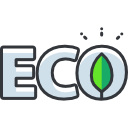What Makes a Textile ‘Organic’?
Organic cotton is grown with crop rotations, beneficial insects, and careful soil stewardship. The result is a fiber that respects ecosystems, supports safer working conditions, and becomes breathable tees, shirts, and denim you can feel good wearing every single day.
What Makes a Textile ‘Organic’?
Flax for linen and hemp thrive with relatively low inputs and love sunny, breezy climates. When cultivated organically, they create strong, airy fabrics with beautiful texture and drape—ideal for warm-weather layers, timeless tailoring, and pieces that age gracefully with each wear.






